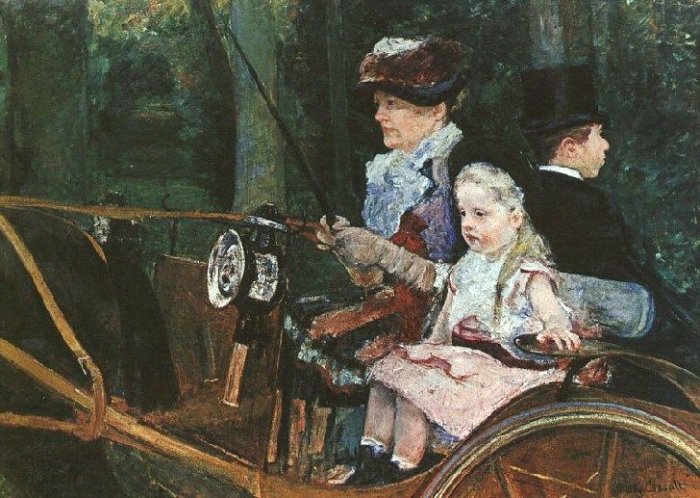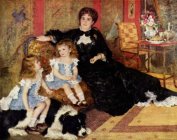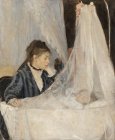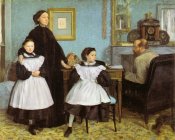The art of the Impressionist portrait

Mary Stevenson Cassatt, American - A Woman and a Girl Driving 1881 - Philadelphia Museum of Art
Why did these masters of colour get interested in portraits?
Why did the Impressionists, so focused on depicting light and fleeting natural aspects such as snow, water and mist, get interested in portraits at a time when photography was making its debut?
And yet Manet, Monet, Renoir, Degas, Cézanne, Berthe Morisot and others breathed new life into this type of painting by going beyond merely physically representing their subjects. In reference to a painting by Degas, an art critic once said that a portrait should be "the study of moral reflections on physical appearance and on dress, the observation of a man’s intimacy with his home environment, of the special features that his profession imprints on him…”.
Impressionist portraits therefore usually take into account the social context of their subjects, as demonstrated by Degas’ ‘Portraits at the Stock Exchange’.
Severe or artificial poses were done away with – women were often depicted in active positions, reading the press (Caillebotte, ‘Interior, Woman Reading’), driving (Mary Cassatt, ‘Woman and Child Driving’) and child rearing (Berthe Morisot, ‘The Cradle’).
Even though many artists used their friends and family as models (see ‘The Bellelli Family’ by Degas), they also painted the art collectors and dealers that supported them (see ‘Madame Charpentier and Her Children’ by Renoir).
The Impressionists had a great sense of daring and often strayed from reality. Cézanne, for example, painted his models with faces like masks to convey a sense of internal isolation. Claude Monet went as far as to paint his wife on her deathbed, using fractured brushwork to allude to the transitory nature of our existence.
From grand commissions to intimate and informal portraits, we will analyse all of these masterpieces in our conference at the end of January!
By Anik Doutriaux - The Impressionists





